h5 hide
I am a toddler.
I learn when we eat together.
Family meals help me grow in many ways. I learn language skills, social skills, and I eat better when we eat together. Let’s eat family meals together as often as possible.
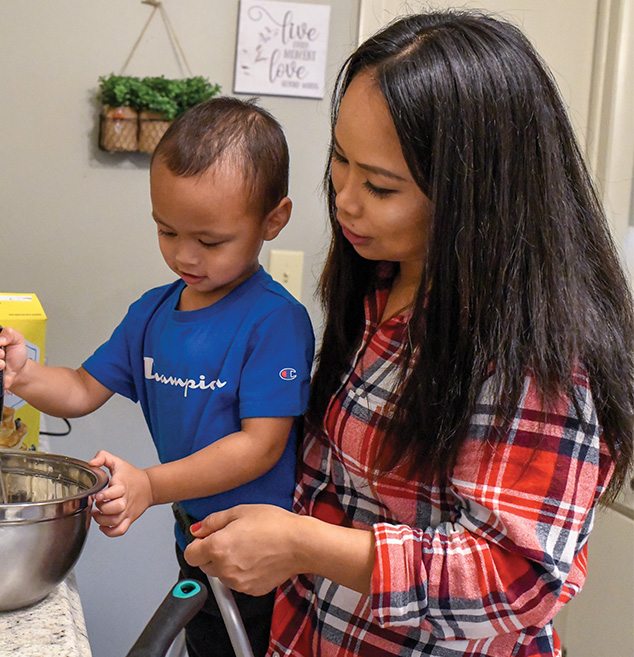
Here are some ways to make family meals relaxing and enjoyable:
- Take a break from screens and other distractions so we can focus on the family. Turn off TVs, computers, and phones.
- Allow me to serve myself. Teach me to take small amounts at first. Let me know I can have more if I am still hungry.
- Talk with me about positive or neutral topics like what I did, who I talked with, and what I learned that day.
- Let me eat at my own pace and in my own way. Please be patient with me.
- I do better with a routine and with limits. Offer meals and snacks every 2-3 hours at about the same times every day. I do best when I have choices. For example, at snack time you could ask me “Would you like peaches or strawberries?”.
- Water is all I need between meals and snacks.
Teach me how to behave at the table.
- Give me simple, clear rules that work for you and me. Be consistent with rules so I know what to expect.
- Learning to eat can be messy, but don’t allow me to make messes on purpose. I should not throw food or dump it on the floor. If I do these things, I am probably not hungry and should be excused from the table.
Here are some examples of what meal and snack portion sizes might look like on my plate.
Breakfast
h4 hide
¼ cup chopped peaches
½ cup low-fat milk
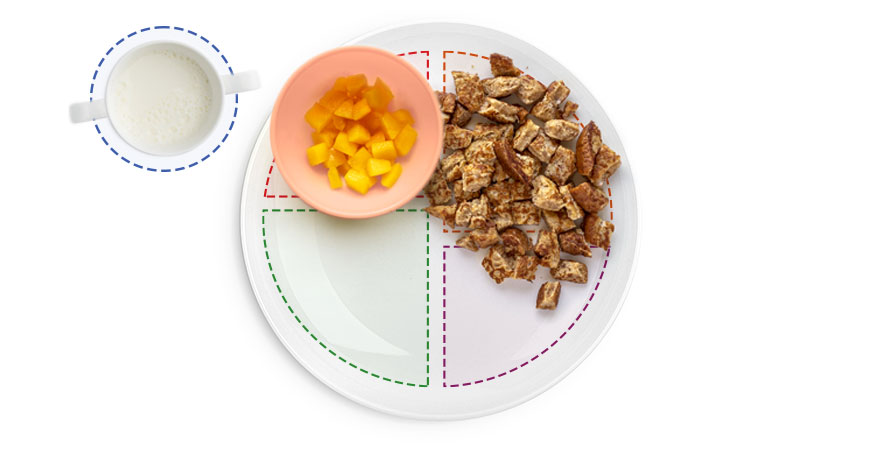
1 slice, cut up whole grain french toast
Lunch
h4 hide
¼ cup chopped blueberries
½ cup cooked, chopped carrots
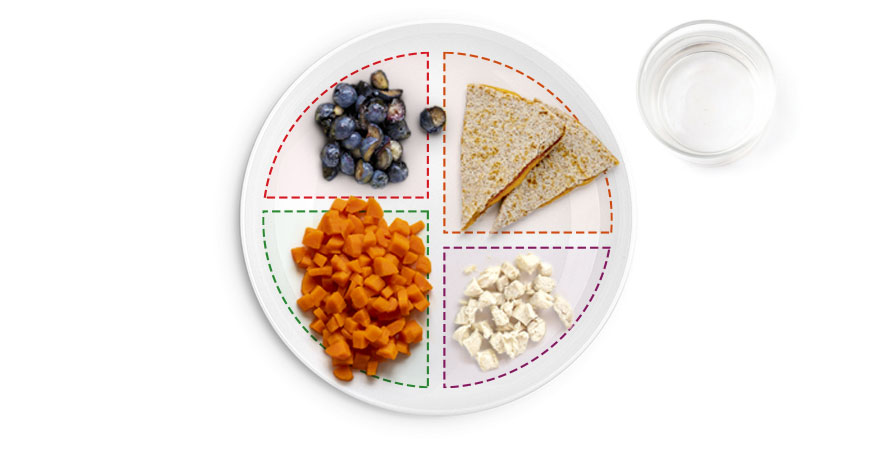
¼ quesadilla
with cheese
2 tablespoons baked, chopped chicken
½ cup water
Snacks
h4 hide
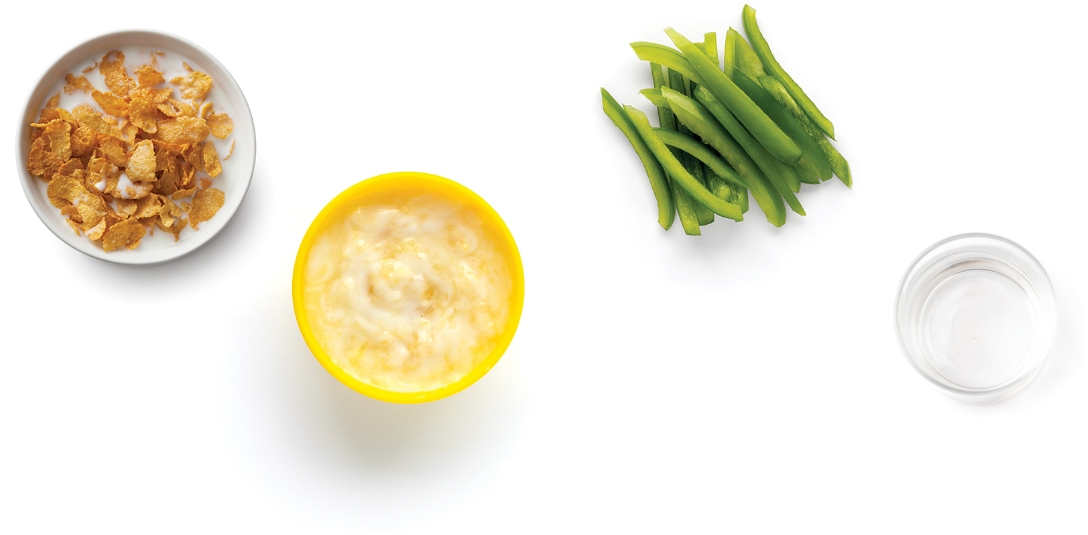
½ cup dry cereal
with ½ cup low-fat milk
¼ cup crushed pineapple
with ½ cup low-fat yogurt
½ cup sliced bell pepper
water between meals and snacks
Dinner
h4 hide
1 medium wedge, cut up melon
½ cup cooked, cut up zucchini
½ cup low-fat milk
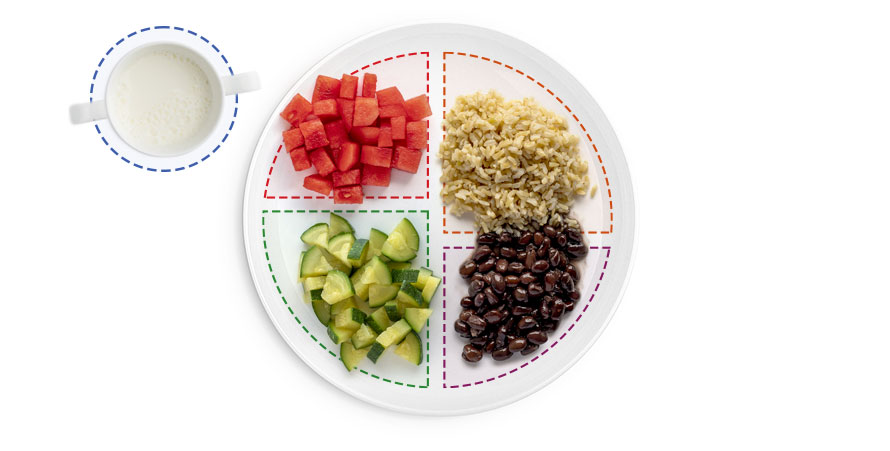
½ cup cooked brown rice
¼ cup cooked black beans
Daily Suggested Food Group Amounts
2 servings a day
1 serving = ½ cup
(1 cup total)
Cooked or soft, raw fruit.
Mashed, sliced, or chopped.
Offer a variety: red, yellow, orange, blue, and green.
2 servings a day
1 serving = ½ cup
(1 cup total)
Raw or cooked, mashed, sliced, or chopped veggies.
Offer a variety: dark green, orange, red, yellow, and purple.
6 servings a day
1 serving = ½ ounce
(3 ounces total)
Whole grain bread, tortillas, rice, or noodles.
Dry or cooked cereal.
6 servings a day
1 serving = ½ ounce
(3 ounces total)
Whole grain bread, tortillas, rice, noodles.
Dry or cooked cereal.
2 servings a day
1 serving = 1 ounce
(2 ounces total)
Cooked, chopped meat, poultry, or fish.
Eggs.
Cooked beans, peas, or tofu.
Peanut butter.
2 servings a day
1 serving = 1 ounce
(2 ounces total)
Cooked, chopped meat, poultry, or fish.
Eggs.
Cooked beans, peas, or tofu.
Peanut butter.
4 servings a day
1 serving = ½ cup
(2 cups total)
Low-fat milk.
Yogurt.
Cheese.
Dairy
4 servings a day
1 serving = ½ cup
(2 cups total)
Low-fat milk.
Yogurt.
Cheese.
Look what I can do!
- I can run and play with others. Let's find ways to be active together throughout the day.
- I can help with simple chores, like putting toys away. Please tell me I’m doing a good job!
- I learn a lot from messy play. I can mix, pour, stir, and make shapes. Let me explore sand, clay, and water play.
- I love to sing. Teach me songs like “Old McDonald” and “The Wheels on the Bus.”
- When we read together I may start to read to you or tell you a story with the pictures in the book.
Keep me safe and healthy.
Keep harmful things out of my reach such as hot pots and pans, batteries, medicines, detergents, and anything I could choke on.
Take me to the doctor for my check-up. We can see how much I’ve grown. Visit www.cdc.gov/vaccines/schedules to see when I am due for shots.
Take me to the dentist to get my teeth checked. Help me brush my teeth at least twice a day with a small, soft toothbrush and smear of toothpaste. Teach me how to spit out the toothpaste.
We need to wash our hands often. Teach me how to wash my hands with warm water and soap. I need to wash them for at least 20 seconds.
Play with me and help me stay active. If I have screen time, keep it limited and interact with me.
Avoid tobacco or nicotine products, alcohol, marijuana, and other illegal drug use to keep our family healthy and safe. For support with quitting tobacco or nicotine products, visit www.quitnow.net. For support with quitting alcohol or other drugs, visit www.findtreatment.gov. Your WIC Nutritionist can also provide additional resources.